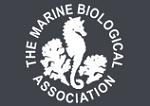APHOTOMARINE
An educational resource dedicated mainly to the photography
and diversity of marine life that can be found in coastal waters
and intertidal areas of Great Britain and Ireland by David Fenwick.

Stylochoplana maculata
- dorsal and ventral view 1
Marine flatworm
Stylochoplana maculata
- dorsal view 1
Marine flatworm
Stylochoplana maculata
- dorsal view 2
Marine flatworm
Stylochoplana maculata
- ventral view 1
Marine flatworm
Stylochoplana maculata
- eye stalks 1
Marine flatworm
Stylochoplana maculata
- ventral detail 1
Specimen above was found under a rock on the lowershore at Albert Pier reef, Penzance, Cornwall, 14.05.18.
Marine flatworm
Stylochoplana maculata
- tentacles / eye arrangement 1
Marine flatworm
Stylochoplana maculata
- dorsal view 1
Marine flatworm
Stylochoplana maculata
- dorsal view 2
Specimen above found in an algae and sediment sample taken from shady side of large rock in a middleshore pool at Lariggan Rocks, Penzance. 20.06.15.
Marine flatworm
Stylochoplana maculata
- on coloured perspex 1
Marine flatworm
Stylochoplana maculata
- head / eyes 1
Marine flatworm
Stylochoplana maculata
- head / eyes 2
Marine flatworm
Stylochoplana maculata
- top view on Kelp 1
Marine flatworm
Stylochoplana maculata
- in collecting bucket 1
Specimen above found on algae in a middleshore pool, near small pier, south of Newlyn Harbour, Newlyn, Cornwall. 21.09.13.
APHOTOMARINE supports open source data recording and sharing for the benefit of wildlife, recorders, research, science and education. The project recommends the following websites and works with the following bodies and organisations.
The Marine Biological Association or MBA, based in Plymouth, is one of the world’s longest-running societies dedicated to promoting research into our oceans and the life they support. Since 1884 the MBA has been providing a unified, clear, independent voice on behalf of the marine biological community.It has a growing membership in over 40 countries.
The National Biodiversity Network or NBN is a charity that supports open source data sharing and recording supporting conservation, science and education. "Why do recorders need open source?". Simply because it supports the core values of wildlife recording and the free use of records and data over a very wide network that includes partners like the Natural History Museum.
The taxonomy used here is based on that of the following database, which is also used by the MBA, NHM and the NBN.
The World Register of Marine Species or WoRMS.

